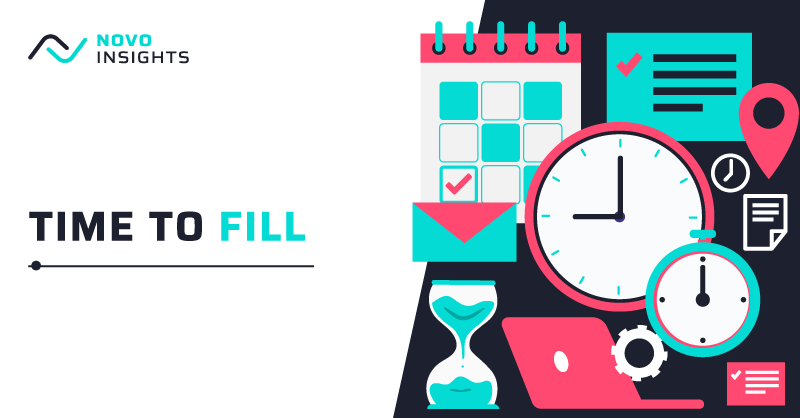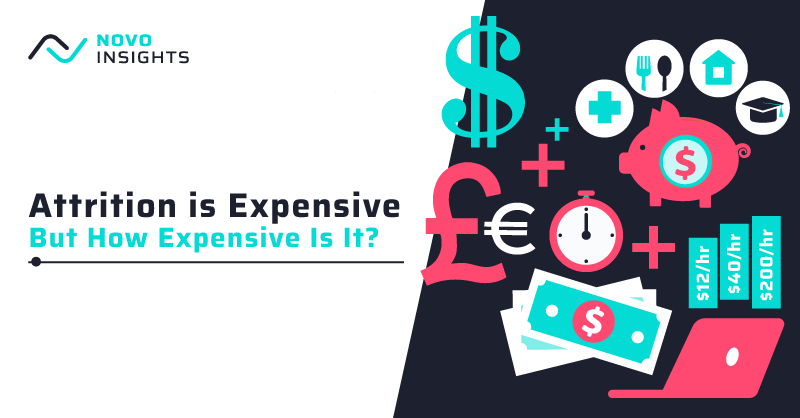Measuring the effectiveness of People Operations and the employee experience is complex. We identify nine key metric areas, and a measurement approach to ensure ongoing alignment to business goals.
Many People leaders struggle to produce data-driven insights to fuel people decisions. While some of this may be driven by technology and capability challenges, we also find that growing People teams get caught measuring the wrong things, which distracts limited resources and degrades confidence in the value of People data. Having a clear perspective on what to measure, how to look at it, and knowing when to take action versus "wait and see" is critical to make the greatest impact with limited resources.
In this article, we share a framework and examples for identifying the People metrics that will matter within your organization.
Want to see an example? Click here to download a free exmaple scorecard
Key Metric Categories
To begin, let's identify a set of topical areas within which we can identify specific measures. These topical areas reflect the role human capital plays in your business and how People programs create value in the organization.
It's important that these topical areas reflect (1) clear measures of business outcomes, (2) the breadth of impact your People program drive, or (3) indicators of People program health. Note the "or" in that sentence: these areas should reflect one or more of the three criteria. We are not searching for a single perfect measure. We want a broader view of human capital activities, outcomes, and People functional value.
Over time, we have found that organizing metrics into the following nine categories provides a holistic view:
Organization Capacity
It's imperative to understand the number and cost of human resources in the business, and the ability for that capacity to translate into value for the company. While basic in calculation, monitoring the number and cost of resources is the foundation for all HR metrics.
Attrition
The cost of attrition is high, so monitoring the rate of attrition helps control the significant value drain that is unwanted attrition. Voluntary leavers are also an indicator (though imperfect) of other challenges in the workforce.
Talent Acquisition
Perhaps no People capability is more critical in the post pandemic economy than attracting talent to fuel the organization's growth. Understanding the volume and cycle metrics for acquiring great talent is on the top f every business leader's mind.
Sentiment
Don't call it "engagement" - but understanding how the workforce feels is an indicator of organizational health. As most organizations have invested in more frequent employee listening campaigns, surfacing and reviewing those metrics can provide insight.
Rewards
People represent the largest investment most organizations make, so monitoring that investment - and the risks associated with that investment - will capture the attention of operating leaders and CFOs alike.
Internal Talent Flow
Your current workforce wants to grow, so measuring growth and the enablers/barrier to growth will help you stay on top of how to met this employee need.
Diversity
Inclusion & Diversity has (finally) risen to be a top consideration for People and corporate leaders, and you need ready-access to how you are trending towards your representation and inclusion goals.
Capability and Performance
Understand the personal performance (are goals and expectations being met) and development (are employees engaging in systemic learning) characteristics of your workforce.
HR Efficiency
People leaders must know how their functional efficiency is changing and compares to applicable benchmarks.
Pick No More Than Five
In each of the above categories, there is a lot we can measure. We strongly recommend that your aggregate HR scorecard include no more than five (5) metrics from each category that reflect the key priorities and levers of success. Just because you can measure the average number of individuals per manager does not mean that is a measure that you need to monitor and evaluate regularly.
To illustrate the thinking behind selecting five measures, we will dive deeper into the Talent Acquisition topical area. The TA space has plenty of metrics worth measuring, but we will identify five that we recommend rise towards the top and contrast them with a few other important measures that we leave off the broader scorecard.
Measures We Include
We identify five measures that are more business-focused - indicators of overall TA team productivity an what managers can expect when engaging in the hiring process.
- Hire Volume: Leaders are often surprised how much hiring occurs, and hiring volume is often a predictor of other HR functional resource needs. Comparing hiring volume to a defined hiring plan is also instructive, as more/less hiring than expected can point to other organizational challenges.
- Hire Quality: You can't just fill seats, you have to fill them with the right people who stay and perform. Your organization should understand what percentage of hires turn out to be the right people.
- Sourcing Volume: The number of applicants/candidates per role to be hired indicates the resource intensity of the recruitment process and can also signal the desirableness of your people experience.
- Cycle Time: An important driver of the cost of attrition and an indicator to shape hiring manager expectations, quantifying how long from your defined start/end point of the hiring process is a key measure of both efficiency and activity.
- Cost Per Hire: There is a real cost - both hard dollars and time invested - to fill an open role. Understanding and tracking this cost can create a case for change when needed.
Key Measures Not Included
The theme behind measures not included is that they are more internally-focused within the TA team, and less about implications and value of TA outward to the customer of TA.
- Candidate Experience: You want to know how your candidates feel about your organization and the selection process - if you aren't measuring this, check out Novo Attract as an easy way to get started. Providing a great experience is a critical goal for the TA team, and having measures to gauge points of friction is important. However, there is less immediate business action required.
- Sourcing Channel: It's helpful to understand where candidates are coming from, whether it's direct outreach or social media postings. This can indicate how TA can best fill the candidate pipeline, but is generally less helpful for broader leaders to understand.
- Website Stats: As the TA Tech market has exploded and candidate hubs/applicant tracking systems have become more advanced, there are more and more measures of usage and candidate engagement with web content. While helpful for optimizing the resources available on the career site, the audience for these metrics is generally a subset of the TA team.
Of course these are just a few of the many metrics you can measure within Talent Acquisition, and within your organization one of these metrics may indeed be more critical than the "top five" suggested above.
Build for What You Are Looking For
We recommend a quarterly view of these metrics, and actively advise against positioning your metrics as a "dashboard." A dashboard is often thought of as an on-demand view of "how things are" within their scope - like the dashboard of the car tells you the speed, fuel level, and temperature of the car at that moment. Most HR metrics are relatively stable day-to-day, and even week-to-week movements can be noise in the data rather than a real indicator of organizational health or HR functional impact. While certainly some metrics are worth monitoring more frequently, we find that a quarterly view adds enough frequency to spot matters quickly but provides enough perspective to separate signals from noise.
For each selected metric, you will want to be able to answer the following questions
- What is it now? This is the baseline - reporting the value for the current quarter.
- How is it changing? Compare the current quarter against the prior quarter and the year prior, to see both short and longer-term changes
- What should it be? Compare the current state and the trend against a defied standard, whether it is a goal, budget, benchmark, or other standard of success.
As such, your scorecard will need to include the space to capture and display the values and comparisons over time. Charts can be instructive, but often charts are best for telling the story once you identify there is a story to tell.
Getting Started
Not sure where to begin? Start by clicking here to access an example scorecard, complete with definitions for each metric included. It may not be right for your business, but it will give ideas and stimulate further thinking. You can also contact us to schedule time for a brainstorming session and to explore how our tools, advisory solutions, or personal coaching can accelerate your metrics journey.





